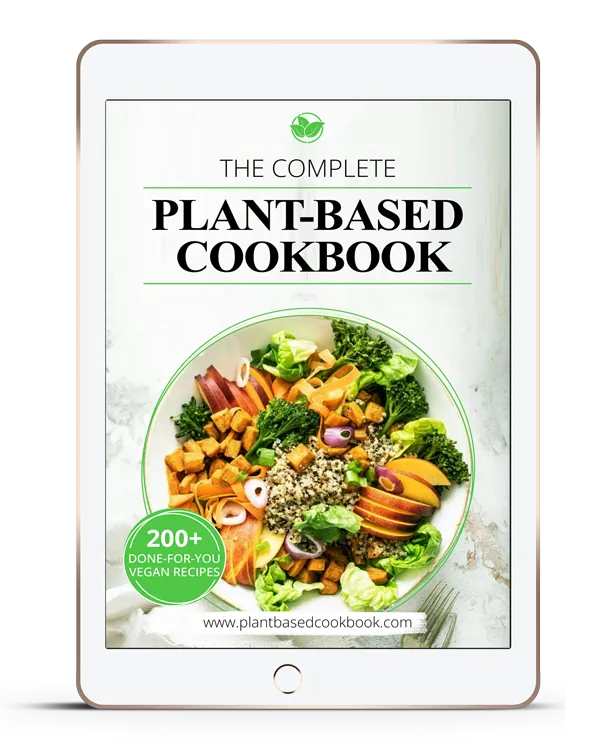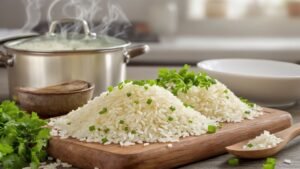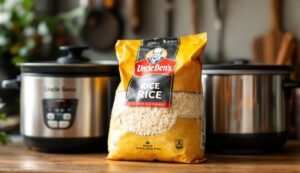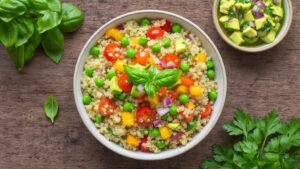“Food is our common ground, a universal experience.” – James Beard. This quote beautifully captures the essence of Young Chow fried rice. It’s a dish that bridges cultures and traditions. Hailing from Yangzhou, China, it’s a delightful blend of flavors and textures. It stands out as a family-friendly meal that brings people together.
This delicious fried rice starts with day-old rice. It’s mixed with meats, vegetables, and eggs, creating a flavorful symphony. Whether it’s the traditional version or a homemade version, it’s loved by many. It has even garnered over 34,490 shares online!
Preparing Young Chow fried rice is quick, taking just 10 minutes. It’s perfect for busy families. This dish could become a staple in many U.S. households. It’s adaptable, allowing for variations like chicken or shrimp fried rice. For the full recipe, visit here. Discover its rich history and step-by-step guide to making it a timeless classic.
Table of Contents
ToggleWhat is Young Chow Fried Rice?
Young Chow Fried Rice, also known as Yangzhou Fried Rice, is a dish cherished worldwide. Its crispy texture and bold flavors have made it a favorite globally. This dish’s history and unique qualities are what make it stand out.
Origin and History of Young Chow Fried Rice
Originating in the mid-1700s, Young Chow Fried Rice hails from Yangzhou, Jiangsu province, China. It gained fame during the Qing dynasty, thanks to Yi Bingshou, a Qing official. Over time, it has evolved, adapting to different tastes and preferences. Today, it’s enjoyed globally, with a significant presence in the Philippines and Asia.
The young chow fried rice history showcases its cultural significance across many nations.
Key Characteristics of Young Chow Fried Rice
Young Chow Fried Rice is distinguished by its unique blend of ingredients. It combines shrimp, char siu, ham, and vegetables, setting it apart from other fried rice dishes. The use of non-sticky rice ensures each grain is separate, enhancing the dish’s texture and flavor.
Its vibrant colors and balanced nutrition make it a beloved choice. A typical serving contains 373 calories, with 13g of protein and essential vitamins. The variety of ingredients contributes to its rich flavor, making it a satisfying meal component.
| Nutritional Value | Per Serving |
|---|---|
| Calories | 373 |
| Protein | 13g |
| Carbohydrates | 40g |
| Fat | 17g |
| Sodium | 1043mg |
| Vitamin A | 4% |
| Vitamin C | 10% |
Young Chow Fried Rice Ingredients
Understanding the young chow fried rice ingredients is key to making this dish at home. What’s in young chow fried rice? It’s a mix of proteins and vegetables that add flavor and appeal. High-quality ingredients are crucial for a great result.
Commonly Used Ingredients
The base of young chow fried rice includes:
- 3 large eggs
- 2 tablespoons vegetable oil
- 4 laap cheung sausages (approximately 6 ounces)
- 1 bunch of scallions (6 to 8)
- 4 cups cooked, chilled rice
- ¼ head of iceberg lettuce
Many recipes suggest using cured or roasted pork, like laap cheung sausage or char siu, for seasoning. This gives a unique flavor. For a shrimp version, add small shrimp (about 8 ounces), making it more enticing.
Ingredient Variations and Substitutes
There are many ingredient variations for fried rice, allowing for creativity. Traditional recipes use specific meats and vegetables, but you can add your own twist. For example:
- Leftover cooked chicken is a great substitute for seafood.
- Frozen peas and mixed vegetables are quick substitutes for fresh produce.
- For a vegetarian version, omit the meat and use tofu with colorful vegetables.
Using day-old rice improves texture and ensures the best frying experience. Preparing meals ahead can be a game changer. With these tips, you can customize your young chow fried rice to your liking!
How to Make Young Chow Fried Rice
Making Young Chow Fried Rice is a delightful experience that brings a taste of tradition to my kitchen. This young chow fried rice recipe combines various ingredients, leading to a satisfying dish perfect for any occasion. I love the ease of following cooking instructions for fried rice, which allows me to whip up a restaurant-quality meal in a short amount of time.
Step-by-Step Cooking Instructions
To get started, gather the following ingredients:
- 4 cups of cold cooked jasmine rice (preferably day-old)
- ¼ pound of shrimp, peeled and deveined
- 5-6 diced Chinese sausages
- Diced vegetables like peas, carrots, and green onions
- 2 eggs, beaten
- Soy sauce to taste
- Oil for cooking
Follow these cooking instructions for fried rice:
- Heat a carbon steel wok until it is smoking.
- Add a generous amount of oil and toss in the shrimp and Chinese sausages. Cook until the shrimp is pink.
- Add the diced vegetables and sauté briefly until softened.
- Push the ingredients to one side of the wok. Pour the beaten eggs into the empty side, scramble until cooked through.
- Break apart the cold rice and add it to the wok, mixing all the ingredients together.
- Drizzle soy sauce over the mixture, stirring well to ensure every grain of rice is flavored.
- Cook for another 1-2 minutes, allowing the rice to get a little crispy.
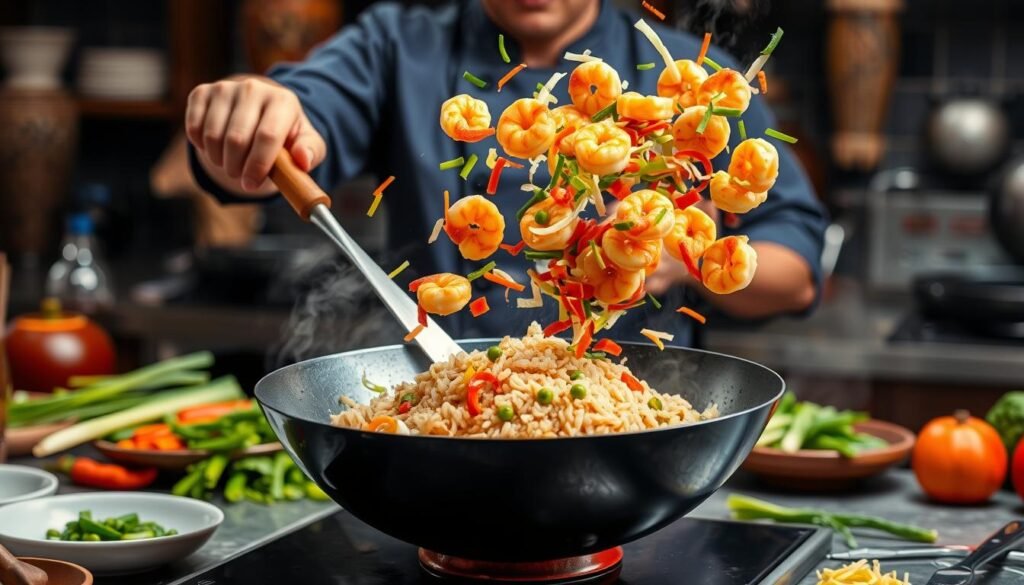
Tips for Perfecting Your Fried Rice
To achieve fried rice perfection, I recommend the following tips:
- Using cold, day-old rice prevents clumping, ensuring a better texture.
- Heating the wok until smoking is essential to avoid sticking and achieve the right fry.
- Maintaining high heat during cooking allows for a quick stir-fry, leading to beautifully cooked ingredients.
- Don’t forget to add oil generously; it enhances the flavor and texture of the dish.
By following these detailed steps and advice, I can create a delicious Young Chow Fried Rice that rivals any restaurant version. Happy cooking!
Young Chow Fried Rice vs House Special Fried Rice
Exploring young chow fried rice vs house special fried rice uncovers their unique qualities. Young Chow Fried Rice is celebrated for its choice of proteins and fresh ingredients. It features shrimp and Chinese sausage, known as “lap leong,” offering a clean, delicate taste. In contrast, House Special Fried Rice combines various proteins like chicken, beef, and pork, creating a dish with a less uniform flavor.
Defining Characteristics of Each
The ingredients in each dish highlight their distinct nature. Young Chow Fried Rice includes:
- Chinese sausage
- Eggs
- Scallions or leeks
- Diced vegetables such as carrots and peas
House Special Fried Rice, on the other hand, offers a mix of proteins, allowing each restaurant to put its own spin on the dish.
Flavor Profiles and Textures
The flavors in both fried rice types are rich but differ significantly. Young Chow Fried Rice boasts a refined taste, thanks to its high-quality ingredients and day-old rice. This rice is fluffy and chewy, enhancing the dish’s texture. In contrast, House Special Fried Rice has a more robust flavor, influenced by a variety of sauces, making each version unique.
| Aspect | Young Chow Fried Rice | House Special Fried Rice |
|---|---|---|
| Protein Choices | Shrimp, Chinese sausage | Mix of chicken, beef, pork |
| Flavor Profile | Delicate, refined | Heavier, varied |
| Texture | Fluffy, chewy | Mixed, often heavier |
| Common Additions | Diced vegetables, leeks | Varied sauces |
Understanding these differences helps us appreciate the distinct appeal of each fried rice variety. Whether it’s the sophisticated taste of Young Chow or the hearty flavor of House Special, both hold a special place in Chinese cuisine.
Conclusion
Our journey through Young Chow Fried Rice reveals its significance beyond mere taste. It’s a window into Chinese culinary history and culture. Hailing from Yangzhou, this dish combines flavors and textures uniquely, appealing to both home cooks and restaurant patrons. Its versatility shines through, whether you stick to traditional ingredients or add your personal touch.
For an authentic taste, look up “young chow fried rice near me” to discover local gems. Or, try your hand at making it with the best young chow fried rice recipe. With the right techniques, every bite will be a flavorful adventure. Incorporate this dish into your repertoire and witness its fusion of tradition and innovation firsthand.
Young Chow Fried Rice stands as a testament to Chinese culture’s values of prosperity and abundance. By indulging in it, you not only enjoy a satisfying meal but also connect with a rich culinary heritage. Share your culinary adventures and relish the rich tastes of Young Chow Fried Rice with loved ones!
FAQ
What is Young Chow Fried Rice?
Young Chow Fried Rice, also known as Yangzhou Fried Rice, is a beloved Chinese dish. It combines flaky rice with shrimp, char siu, vegetables, and eggs. This mix creates a perfect balance of flavors and textures.
What ingredients are typically used in Young Chow Fried Rice?
The dish often includes leftover white rice, eggs, shrimp, and diced Chinese ham or char siu. Green peas, carrots, and soy sauce are also common. These ingredients make the dish colorful and nutritious.
How does Young Chow Fried Rice differ from House Special Fried Rice?
Young Chow Fried Rice is distinct due to its specific ingredients like shrimp and char siu. In contrast, House Special Fried Rice features a mix of proteins like chicken, beef, and pork. It lacks a fixed recipe.
Can I make Young Chow Fried Rice vegetarian?
Absolutely! A vegetarian version can be made by removing meat and adding tofu and various vegetables. This approach keeps the dish both flavorful and fulfilling.
What are some tips for perfecting Young Chow Fried Rice?
For restaurant-quality Young Chow Fried Rice, start with cold, day-old rice to avoid clumps. Ensure your wok is extremely hot to prevent sticking. Cooking at high heat is crucial. Don’t forget to add oil generously for enhanced flavor and texture.
How many calories are in Young Chow Fried Rice?
The calorie count varies by recipe. However, a typical serving of Young Chow Fried Rice has about 350-500 calories. This depends on the specific ingredients used.
Where can I find Young Chow Fried Rice near me?
To find Young Chow Fried Rice, simply search online for “young chow fried rice near me.” This will help you locate nearby restaurants and Chinese food places that serve this tasty dish.
Source Links
- https://www.chinasichuanfood.com/chinese-fried-rice-yangzhou-fried-rice/
- https://pupswithchopsticks.com/yeung-chow-fried-rice/
- https://en.wikipedia.org/wiki/Yangzhou_fried_rice
- https://panlasangpinoy.com/yang-chow-fried-rice/
- https://momsdish.com/young-chow-fried-rice
- https://www.latimes.com/food/story/2020-03-04/recipe-yang-chow-sausage-scallion-shrimp-fried-rice
- https://cicili.tv/young-chow-fried-rice-recipe/
- https://www.culinarytravels.co.uk/blog/03052016135501-yangzhou-fried-rice-aka-yeung-chow-fried-rice/
- https://redhousespice.com/yangzhou-fried-rice/
- https://www.kawalingpinoy.com/yang-chow-fried-rice/
- http://reelandgrill.blogspot.com/2010/04/chinese-fried-rice-or-yang-chow-fried.html
- https://iamafoodblog.com/better-take-yang-chow-fried-rice-recipe-8-tips-tricks-best-fried-rice-life/
- https://jajabakes.com/yang-chow-fried-rice/
- https://tasteasianfood.com/yang-chow-fried-rice/
- https://peking-garden.co.uk/blog/the-art-of-cooking-yeung-chow-fried-rice-tips-and-tricks-from-peking-garden
- https://www.classace.io/answers/make-an-market-analysis-about-young-chow-fried-rice-provide-insights-to-potential-customers-and-to-your-competitors-identifies-and-quantifues-the-customers-that-you-will-be-targeting-for-sales


